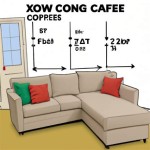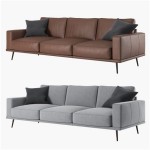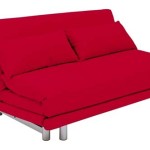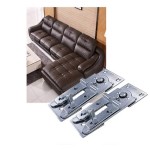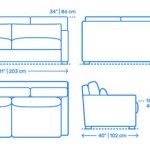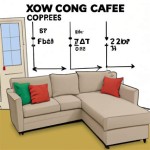Side Sofa Table: Functionality and Style for the Modern Living Room
The side sofa table, also known as an end table or sometimes a couch table, is a versatile piece of furniture designed to complement and enhance the functionality of a sofa. More than just a decorative accent, the side sofa table offers practical utility, providing a convenient surface for placing drinks, snacks, books, remote controls, and other essentials within easy reach. Its design and placement can significantly impact the overall aesthetic of a living room, contributing to both its style and organization.
The selection of a side sofa table requires careful consideration of various factors, including the size and style of the sofa, the available space, the desired functionality, and the overall decor of the room. A well-chosen side sofa table can seamlessly integrate into the existing environment, adding both visual appeal and practical convenience. Conversely, a poorly chosen table can disrupt the flow of the room and detract from its overall design.
The following sections will explore key aspects of side sofa tables, including their various types, considerations for selection, and tips for incorporating them effectively into a living room or similar space.
Understanding the Different Types of Side Sofa Tables
Side sofa tables come in a diverse range of designs, materials, and sizes, each catering to different needs and aesthetic preferences. Understanding these variations is crucial for selecting the most appropriate table for a given space.
Traditional Side Tables: These tables often feature classic designs, such as turned legs, intricate carvings, and rich wood finishes. They are typically made from solid wood, such as oak, maple, or cherry, and are designed to complement traditional or formal living room settings. Traditional side tables may also incorporate drawers or shelves for additional storage.
Modern Side Tables: In contrast to traditional designs, modern side tables often feature clean lines, minimalist aesthetics, and contemporary materials. They may be constructed from metal, glass, acrylic, or engineered wood. Modern side tables often prioritize simplicity and functionality, focusing on providing a convenient surface without excessive ornamentation.
Rustic Side Tables: Rustic side tables embrace natural materials and raw textures, often featuring reclaimed wood, exposed metal hardware, and distressed finishes. They are well-suited for creating a warm and inviting atmosphere in a living room or den. Rustic designs often emphasize the inherent beauty of the materials, showcasing knots, grains, and imperfections.
Industrial Side Tables: Industrial side tables draw inspiration from factory and warehouse aesthetics, often incorporating metal frames, exposed rivets, and reclaimed wood tops. They are characterized by their durability, functionality, and utilitarian design. Industrial side tables are a popular choice for loft apartments, urban dwellings, and contemporary spaces.
Glass Top Side Tables: Glass top side tables offer a sleek and modern look, allowing light to pass through and creating a sense of spaciousness. They are often paired with metal or wooden frames and can be a good option for smaller living rooms or spaces where visual lightness is desired.
Storage Side Tables: These tables incorporate drawers, shelves, or cabinets to provide additional storage space for books, magazines, remote controls, and other items. Storage side tables are particularly useful for maximizing space and keeping a living room organized.
C-Shaped Side Tables: C-shaped side tables are designed to slide under the sofa, providing a convenient surface for placing laptops, snacks, or drinks while sitting on the couch. They are often adjustable in height to accommodate different sofa heights and user preferences.
Key Considerations When Choosing a Side Sofa Table
Selecting the right side sofa table involves considering several factors to ensure it complements the existing furniture, meets the functional needs, and enhances the overall aesthetic of the room.
Size and Proportion: The size of the side sofa table should be proportionate to the size of the sofa and the available space. A table that is too large can overwhelm the room, while a table that is too small may appear insignificant. The height of the table should also be considered, ideally matching or being slightly lower than the height of the sofa armrest for easy access.
Style and Design: The style of the side sofa table should complement the overall decor of the room. Consider the existing furniture, wall colors, and accessories when selecting a table. A cohesive design will create a harmonious and visually appealing space.
Material and Durability: The material of the side sofa table should be chosen based on its durability, aesthetics, and maintenance requirements. Solid wood tables are known for their durability and classic appeal, while metal tables offer a modern and industrial aesthetic. Glass top tables can add a touch of elegance, but they may require more frequent cleaning. Consider the lifestyle and usage patterns when selecting a material.
Functionality: Determine the primary function of the side sofa table. Will it be used primarily for holding drinks and snacks, or will it also need to provide storage space? Consider the need for drawers, shelves, or other features that can enhance its functionality. If the table is to be used for reading or working, consider the need for a lamp or charging station.
Placement and Arrangement: The placement of the side sofa table is crucial for its functionality and aesthetic impact. Typically, side tables are placed at either end of the sofa, providing a convenient surface for all occupants. However, the arrangement can be adjusted based on the size and shape of the room, as well as the specific needs of the users. Consider the proximity to outlets for lamps and charging devices.
Budget: Side sofa tables are available in a wide range of price points, depending on the materials, design, and brand. Determine a budget before starting the search to narrow down the options and avoid overspending. Keep in mind that investing in a high-quality, durable table may be more cost-effective in the long run.
Tips for Incorporating Side Sofa Tables Effectively
Integrating side sofa tables effectively requires careful planning and attention to detail. The following tips can help to create a functional and visually appealing living room space.
Create a Balanced Arrangement: Aim for a balanced and symmetrical arrangement by placing matching side tables at either end of the sofa. This creates a sense of order and visual harmony. If using different side tables, ensure they complement each other in terms of style, color, and scale. Consider using a rug to anchor the seating area and further define the space.
Layer Lighting: Use side sofa tables to incorporate layered lighting into the living room. Place table lamps on the side tables to provide ambient lighting for reading, relaxing, or socializing. Choose lamps that complement the style of the table and the overall decor of the room. A dimmer switch can add to the versatility of the lighting.
Accessorize Thoughtfully: Accessorize the side sofa tables with carefully chosen items to add personality and visual interest. Consider placing books, decorative objects, plants, or framed photos on the table. Avoid cluttering the surface with too many items, as this can detract from its functionality and aesthetic appeal. Arrange items in groupings of odd numbers for a more visually appealing arrangement.
Consider the Scale of Accessories: The scale of the accessories placed on the side sofa table should be proportionate to the size of the table. Avoid using oversized accessories on small tables, as this can create an unbalanced look. Small-scale accessories can be used to add subtle accents and details.
Maintain a Clear Pathway: Ensure that the placement of the side sofa tables does not obstruct the flow of traffic in the living room. Maintain a clear pathway around the tables to avoid tripping hazards and create a comfortable and accessible space. Consider the placement of other furniture and ensure there is sufficient space to move around freely.
Experiment with Different Materials and Textures: Don't be afraid to experiment with different materials and textures when selecting side sofa tables. Mix and match wood, metal, glass, and other materials to create a unique and personalized look. Consider the texture of the sofa and other furniture when choosing the material for the side tables. A variety of textures can add depth and visual interest to the room.
Use Trays to Organize Items: Use decorative trays on the side sofa tables to organize smaller items, such as remote controls, coasters, and magazines. Trays can help to keep the surface tidy and prevent clutter. Choose trays that complement the style of the table and the overall decor of the room.
By considering these factors and implementing these tips, individuals can choose and incorporate side sofa tables that enhance both the functionality and aesthetic appeal of their living spaces, creating a more comfortable and inviting environment.

What Is The Difference Between A Console Table And Side Living Spaces

Sofa Side Table M S

Bergen Oak Side Table Living Room Furniture Bentley Designs Ltd

Icon Wood And Steel Sofa Side Table With Shelves Coffee Book Shelf

Wooden Sofa Side Table Chair Arm Rest Rustic Stylish Useful Tray Wrap Wood Couch Tableside

Simple Sofa Side Table With Storage Space Two Layer Dark Brown Charmydecor Coffee

Buy Dark Bronx Oak Effect Sofa Side Table From The Next

Vecelo 11 In W Brown C Shaped End Side Couch Table Snack Style For Living Room Sofa Wood Tv Tray Set Of 2 Khd Dc St01 A2 The Home Depot

C Shaped End Table Side For Sofa And Bed 27 Inches High Couch Slide Under Grey Rustic Brown Com

Sofa Side Table Unit Coffee

